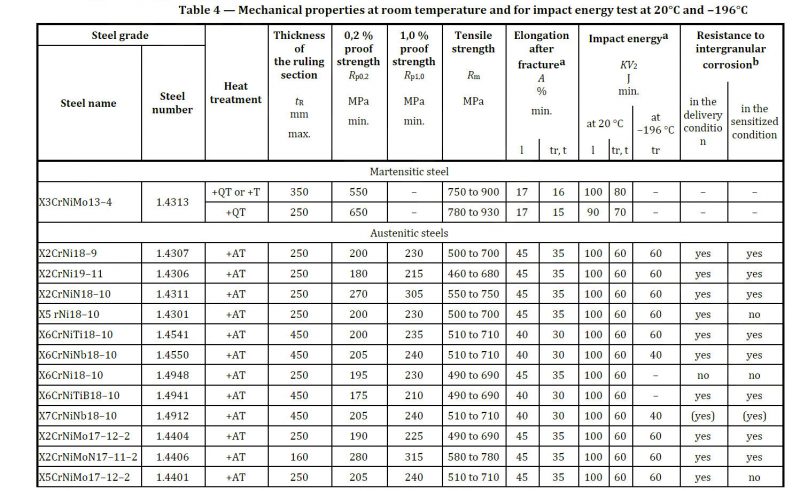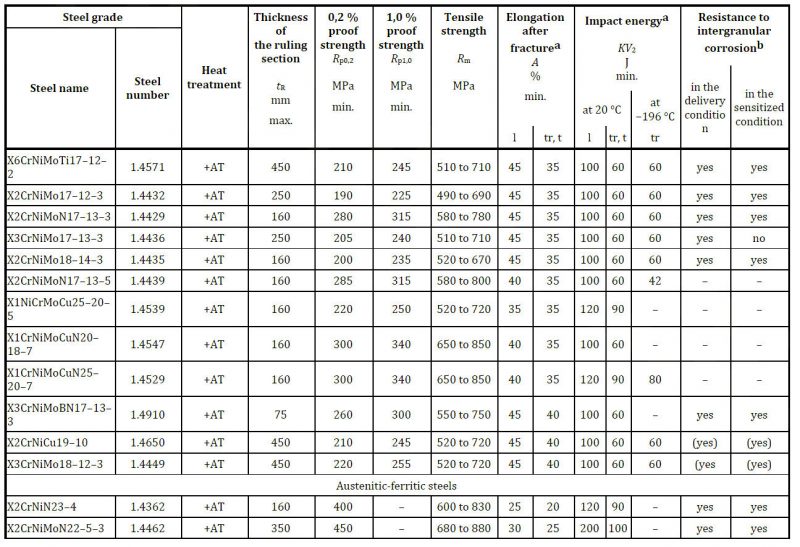This clause contains specific requirements for pressure equipment that have been considered on all harmonized standards of Directive 2014/68/EU, generally known as the Pressure Equipment Directive. It comes from a compromise solution found during the preparation of the first Pressure Equipment Directive 97/23/EC, of which the subject directive 2014/68/EU is a “recast”. In fact during the discussions in the European Council there were two different opinions concerning all “New Approach” directives: some delegates thought that a New Approach directive should not contain numerical values, which on the contrary should be completely left to the harmonized application standards; however other delegates were of the opinion that at least some minimum figures should be required to give a significance to the Essential Safety requirements (for example the values of the nominal design stresses for the materials, the coefficients of the welded joints, the test pressures and so on). The result of this compromise was Clause 7 of Annex I, which starts with the following foreword:
7. SPECIFIC QUANTITATIVE REQUIREMENTS FOR CERTAIN PRESSURE EQUIPMENT
The following provisions apply as a general rule. However, where they are not applied, including in cases where materials are not specifically referred to and no harmonised standards are applied, the manufacturer shall demonstrate that appropriate measures have been taken to achieve an equivalent overall level of safety.
In other words, all the numerical values contained in this clause, should not be considered mandatory: the manufacturer has only the obligation, in case they are not applied, to prove that he has taken “appropriate measures to achieve an equivalent level of safety”.
The interpretation given of these minimum requirements has not always been uniform: differences exist for example in the interpretation of the value of the test pressure, which are actually different in the boiler standards (EN 12952 and EN 12953), in the piping standard (EN 13480) and in the unfired pressure vessel standard (EN 13445).
This, up to now, was not the case of the nominal design stresses, for which the a.m. standards have always given the same interpretation. Unfortunately, in the particular case of austenitic stainless steels, the provisions made in the harmonized standards are slightly different from the text of Clause 7, which actually prescribes:
7.1.2. The permissible general membrane stress for predominantly static loads and for temperatures outside the range in which creep is significant shall not exceed the smaller of the following values, according to the material used:
— in the case of ferritic steel including normalised (normalised rolled) steel and excluding fine-grained steel and specially heat-treated steel, 2 / 3 of R e/t and 5 / 12 of R m/20 ,
— in the case of austenitic steel:
— if its elongation after rupture exceeds 30 %, 2 / 3 of R e/t
— or, alternatively, and if its elongation after rupture exceeds 35 %, 5 / 6 of R e/t and 1 / 3 of R m/t
— in the case of non-alloy or low-alloy cast steel, 10 / 19 of R e/t and 1 / 3 of R m/20
In fact the actual (uniform) interpretation considered up to by EN 12952.3, EN 13480.3 and EN 13445.3 is the following:
The permissible general membrane stress for predominantly static loads and for temperatures outside the range in which creep is significant shall not exceed the smaller of the following values, according to the material used:
— in the case of ferritic steel including normalised (normalised rolled) steel and excluding fine-grained steel and specially heat-treated steel, 2 / 3 of R e/t and 5 / 12 of R m/20 ,
— in the case of austenitic steel:
— if its elongation after rupture is equal to or greater than 30%, 2 / 3 of R e/t
— or, alternatively, and if its elongation after rupture is equal to or greater than 35%, 5 / 6 of R e/t and 1 / 3 of R m/t
— in the case of non-alloy or low-alloy cast steel, 10 / 19 of R e/t and 1 / 3 of R m/20
In fact the difference between the requirement of Clause 7 of the PED and its translation into all the harmonized pressure equipment standard concerns only those austenitic steel qualities which have an elongation after rupture of exactly 30% or exactly 35%. Unfortunately, in the case of austenitic steel forgings (see enclosed extract from the harmonized material standard EN 10222.5), almost all the material qualities considered in the standard have a minimum rupture elongation (in the transverse direction) which is exactly equal either to 30% or to 35%: this means, in the case where the elongation is exactly 35%, that according to the present edition of all the harmonized pressure equipment standards all the components made of such materials can be calculated with a higher nominal design stress, while applying literally 7.1.2, 4th indent, the nominal design stress would be lower, and therefore the resulting thicknesses and weights would be higher.
Note, however, that the present edition of EN 13445.3:2014, issue 5, contains another important deviation from 7.1.2, 1st indent, where the nominal design stress of plain ferritic steels is limited by 5/12 of the tensile strength at 20 °C:
6.3 – Alternative route for steels (except castings), other than austenitic steels covered by 6.4 and 6.5, with a minimum rupture elongation, as given in the relevant technical specification for the material, below 30 %
6.3.1 – General
Alternative route allows the use of higher nominal design stress with an equivalent overall level of safety if all of the following conditions are met:
a) Material requirements as specified in EN 13445-2:2014 for Design by Analysis – Direct Route.
b) Restriction in construction and welded joints as specified in Clause 5 and in Annex A for Design by Analysis –Direct Route.
c) All welds which must be tested by non-destructive testing (NDT) according to the requirements of EN 13445-5:2014 shall be accessible to NDT during manufacture and also for in-service inspection.
d) Fatigue analysis according to Clause 17 or 18 in all cases.
e) Fabrication requirements as specified in EN 13445-4:2014 for Design by Analysis – Direct Route.
f) NDT as specified in EN 13445-5:2014 for Design by Analysis – Direct Route.
g) Appropriate detailed instructions for in-service inspections are provided in the operating instructions of the manufacturer.
6.3.2 – Normal operating load cases
The nominal design stress for normal operating load cases f shall not exceed fd , the smaller of the two following values:
– the minimum yield strength or 0,2 % proof strength at calculation temperature, as given in the technical specification for the material, divided by the safety factor 1,5; and
– the minimum tensile strength at 20 °C, as given in the technical specification for the material, divided by the safety factor 1,875.
In other words, if provisions a) to g) of EN 13445.3:2014 are applied, the safety factor on the tensile strength at room temperature of carbon and alloy steel ferritic materials may be reduced from 1/(5/12) = 2,4 to 1,875: which of course allows a substantial increase of the nominal design stress of ferritic steels, particularly at relatively low temperatures, with important advantages on thicknesses and weights of all the components concerned. It is true that this procedure contradicts a specific requirement of Clause 7, but it is also true that this is done considering a series of alternative measures that guarantee an equivalent level of safety.
During the HAS consultant’s assessment of the new edition 2020 of EN 13445.3, the problem of non-conformity to point 7.1.2 of the PED of the actual text of the standard has been raised. The objections of the responsible WG (WG53 of CEN TC54) were namely based on the following points:
Unfortunately the time left to WG53 / CEN TC54 to discuss this problem with the HAS consultant was not enough to consider all the possible solutions: the proposal made by WG53 during a Skype meeting of around half an hour (in practice to consider the actual measured value of the rupture elongation instead of the minimum tabulated value for the application of 7.1.2) was discarded by the HAS Consultant. Therefore, without further consultations of WG53 experts, CEN BT decided to start an exceptional voting procedure, where the CEN member organizations were required to make a choice between the solution proposed by the HAS consultant and the one proposed by WG53, however knowing that in this latter case the entire standard EN 13445 would not be published on the official Journal, thus losing the presumption of conformity with the PED. Of course this situation led the majority of the member organizations to abstain or to accept the solution proposed by the HAS consultant, despite the comments made by all the standard bodies to which WG53 experts belong. WG53 is therefore now forced to accept the modification of the standard proposed by the HAS consultant, that means that the 2020 edition of EN 13445.3 will become substantially different from the previous editions at least for the lower values of the nominal design stresses to be used for the calculation of stainless steel vessels.
Of course TC54 is not in the positions to raise objections against a BT decision: however I think that other solutions are possible, considering the exact meaning of all the prescriptions contained in Clause 7, Annex I of the PED. In fact, with the agreement of other WG53 experts, I tried (unfortunately when the BT decision was already taken) to propose an alternative solution, based on the foreword of Clause 7, Annex I: that is, for the case of materials having exactly a minimum tabulated elongation of exactly 35%, to consider the higher nominal design stress already provided for materials with higher elongation values, provided alternative safety measures are taken: for example, a minimum amount of volumetric NDT (thus excluding vessels of testing group 4), or, in the case of unwelded components, a minimum value of the impact test values).
May be this alternative solution could be considered in the next issue of EN 13445.3. However I think that at this stage also the Pressure Equipment Advisory Nucleus and the Commission Desk Officer should give their opinion on the problem, considering the following basic questions.
I expect an answer to all these questions from the next meeting (January 28th, 2020) of the Pressure Equipment Advisory Nucleus, considering that in the relevant meeting agenda there are already two points (Information on European Commission and information on CEN activities) on which these questions could be discussed.
MILANO, January 15th, 2020 Fernando Lidonnici (Convenor of WG53/CEN TC54) 
ANNEX 1 – Extract from EN 10222.5

